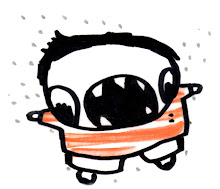The Arabic Glyph
 8 (eight) is the natural number following 7 and preceding 9. The SI prefix for 10008 is yotta (Y), and for its reciprocal yocto (y). It is a composite number, its proper divisors being 1, 2, and 4. Eight is a power of two, being 23, or two cubed.
8 (eight) is the natural number following 7 and preceding 9. The SI prefix for 10008 is yotta (Y), and for its reciprocal yocto (y). It is a composite number, its proper divisors being 1, 2, and 4. Eight is a power of two, being 23, or two cubed.8 is the base of the octal number system, which is mostly used with computers. In octal, one digit represents 3 bits. In modern computers, a byte is a grouping of eight bits, also called an octet. The number 8 is a Fibonacci number, being 3 plus 5. The next Fibonacci number is 13.
 In the beginning, various groups in India wrote eight more or less in one stroke as a curve that looks like an uppercase H with the bottom half of the left line and the upper half of the right line removed. At one point this glyph came close to looking like our modern five. With the western Ghubar Arabs, the similarity of the glyph to five was banished by connecting the beginning and the end of stroke together, and it was only a matter of the Europeans rounding the glyph that led to our modern eight.
In the beginning, various groups in India wrote eight more or less in one stroke as a curve that looks like an uppercase H with the bottom half of the left line and the upper half of the right line removed. At one point this glyph came close to looking like our modern five. With the western Ghubar Arabs, the similarity of the glyph to five was banished by connecting the beginning and the end of stroke together, and it was only a matter of the Europeans rounding the glyph that led to our modern eight.funk podcast









4 Comments:
I was oddly entertained by this post.
Absolutely! The Fibonacci series is an underpinning ratio of the material urge of the universe realizing itself.
Sacred geometry.
Funky stuff
hmmm. The things you learn on the net... Maybe you'd be the guy to ask why so many Koreans make their nines backwards like p's.
Oh, now you spoiled all things computer for me. Just knowing all those 8's are behind this pretty screen makes me wonder... exactly how many does it take to fire up Windows... or to surf to this blog...
Hope you're havin' a great weekend!
Post a Comment
<< Home